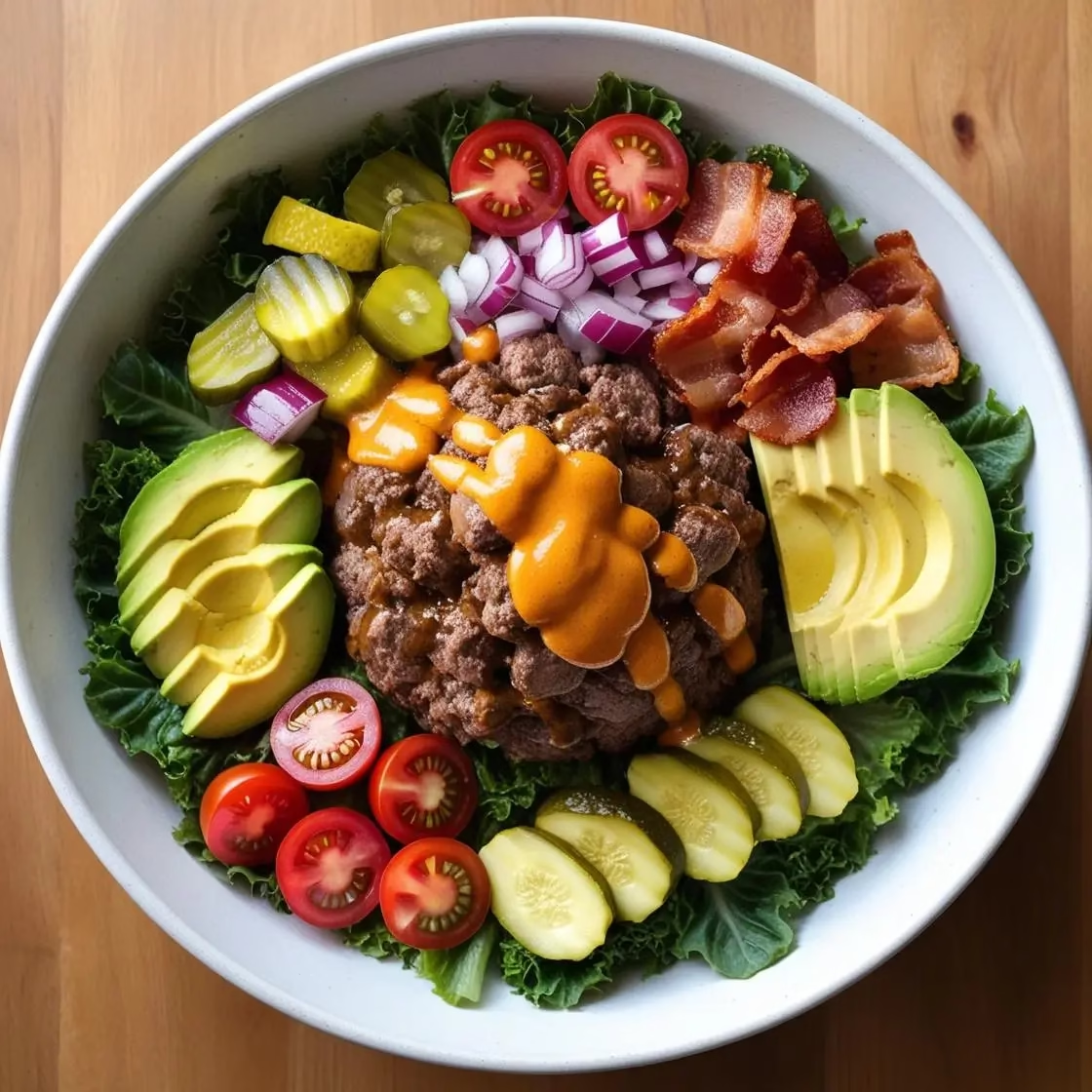There’s something undeniably satisfying about biting into a juicy burger, yet sometimes you crave all those delicious flavors without the mess or the carbs from a traditional bun. Enter the Burger Bowl Recipe – a brilliant culinary innovation that delivers everything you love about burgers in a convenient, customizable format. This deconstructed approach to America’s favorite sandwich has, without a doubt, revolutionized how we enjoy this classic meal.
Furthermore, it offers a healthier alternative that doesn’t sacrifice an ounce of flavor. Whether you’re following a specific dietary plan or simply looking to switch things up in the kitchen, this Burger Bowl recipe will certainly become a regular in your meal rotation. Additionally, it’s perfect for meal prep, family dinners, or even casual entertaining when you want to impress without spending hours in the kitchen.
Table of Content
- Why I Love This Recipe
- Ingredient Key
- Step-by-Step Instructions
- Tips for Burger Bowl Success
- Storage Information
- Nutritional Information
- Similar Recipes You Might Like
- Frequently Asked Questions About Burger Bowls
Why I Love This Recipe
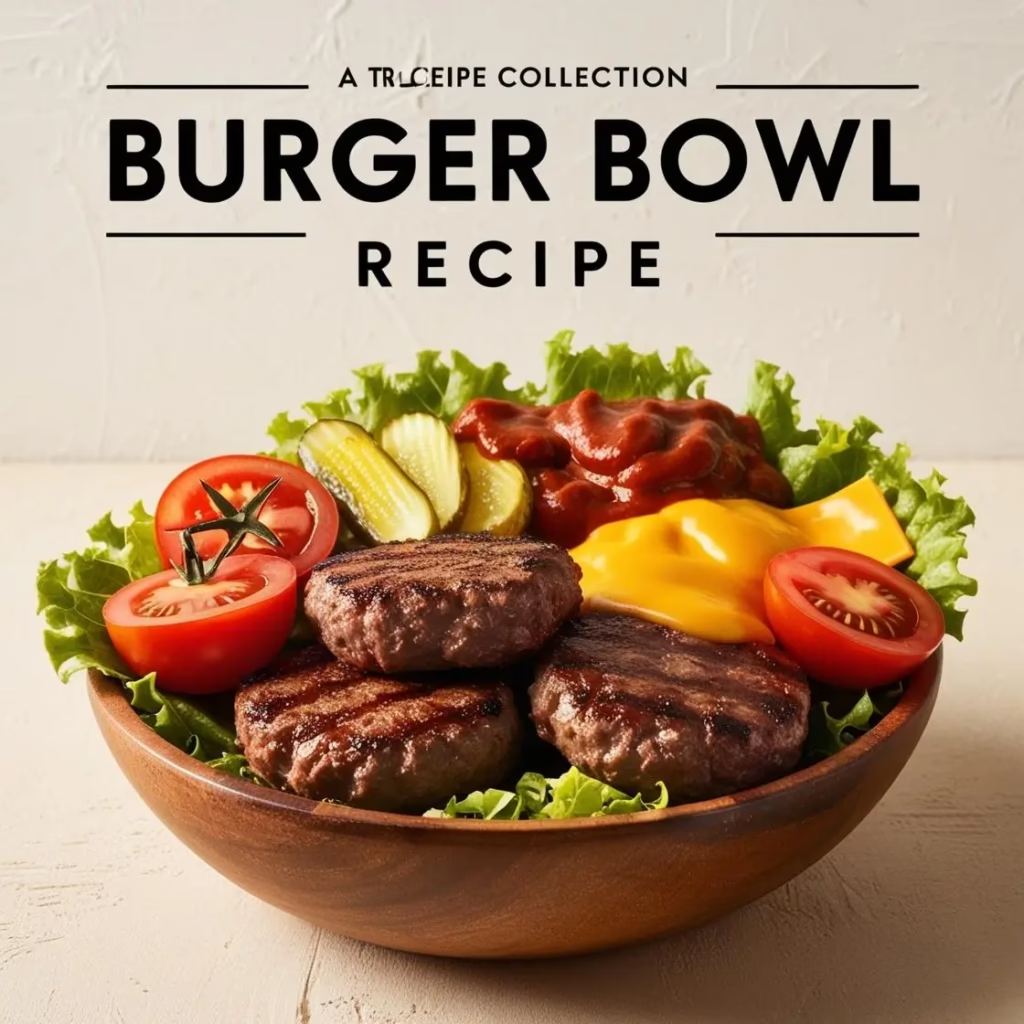
I first discovered Burger Bowls during a particularly hectic period in my life when quick, nutritious meals were absolutely essential. Consequently, this recipe quickly became my go-to solution for busy weeknights. What initially drew me to this concept was its incredible versatility – you can essentially customize every component according to your preferences or what’s available in your refrigerator. Moreover, as someone who occasionally wants to reduce carb intake without feeling deprived, this recipe offers all the satisfaction of a burger while keeping things lighter.
Another reason I’m completely devoted to this recipe is its appeal to everyone in my household. My kids, who typically resist anything that seems « healthy, » devour these bowls enthusiastically. Meanwhile, my partner appreciates that he can add extra toppings to his portion without affecting anyone else’s meal. As a result, Burger Bowls have become our Thursday night tradition, and surprisingly, everyone looks forward to it each week.
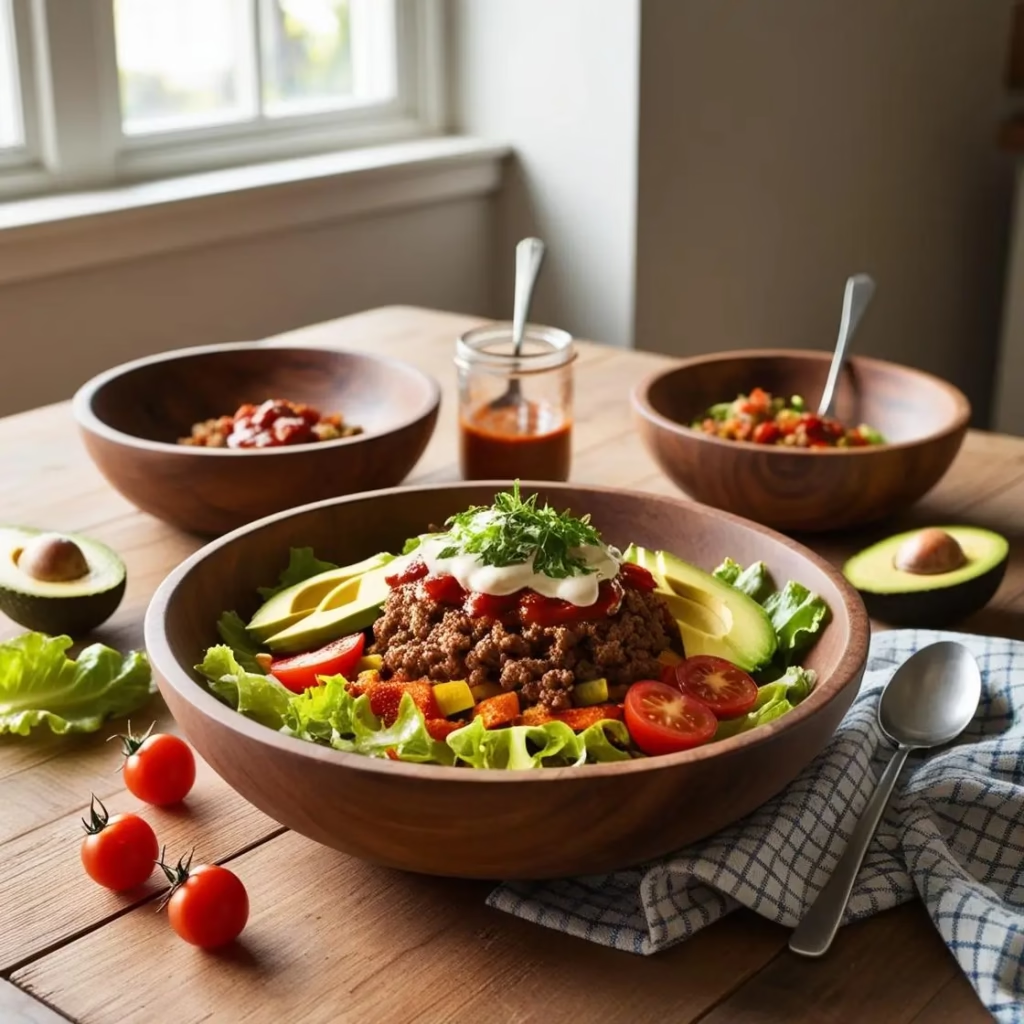
Ingredient Key
- Ground Beef: Opt for 80/20 lean-to-fat ratio for the juiciest results, however, you can use leaner options if preferred
- Lettuce: Crisp romaine or iceberg provides the perfect base
- Tomatoes: Cherry tomatoes or diced vine-ripened varieties add freshness
- Red Onion: Offers a sharp contrast to the savory meat
- Pickles: Brings tanginess and that classic burger flavor
- Cheddar Cheese: Shredded or crumbled for even distribution
- Avocado: Contributes creaminess and healthy fats
- Meat : Adds smokiness and crunch (optional but highly recommended)
- Burger Seasoning: A blend of salt, pepper, garlic powder, and onion powder
- Special Sauce: Mayo, ketchup, mustard, and pickle relish combined
- Additional Toppings: Jalapeños, mushrooms, fried egg, or blue cheese
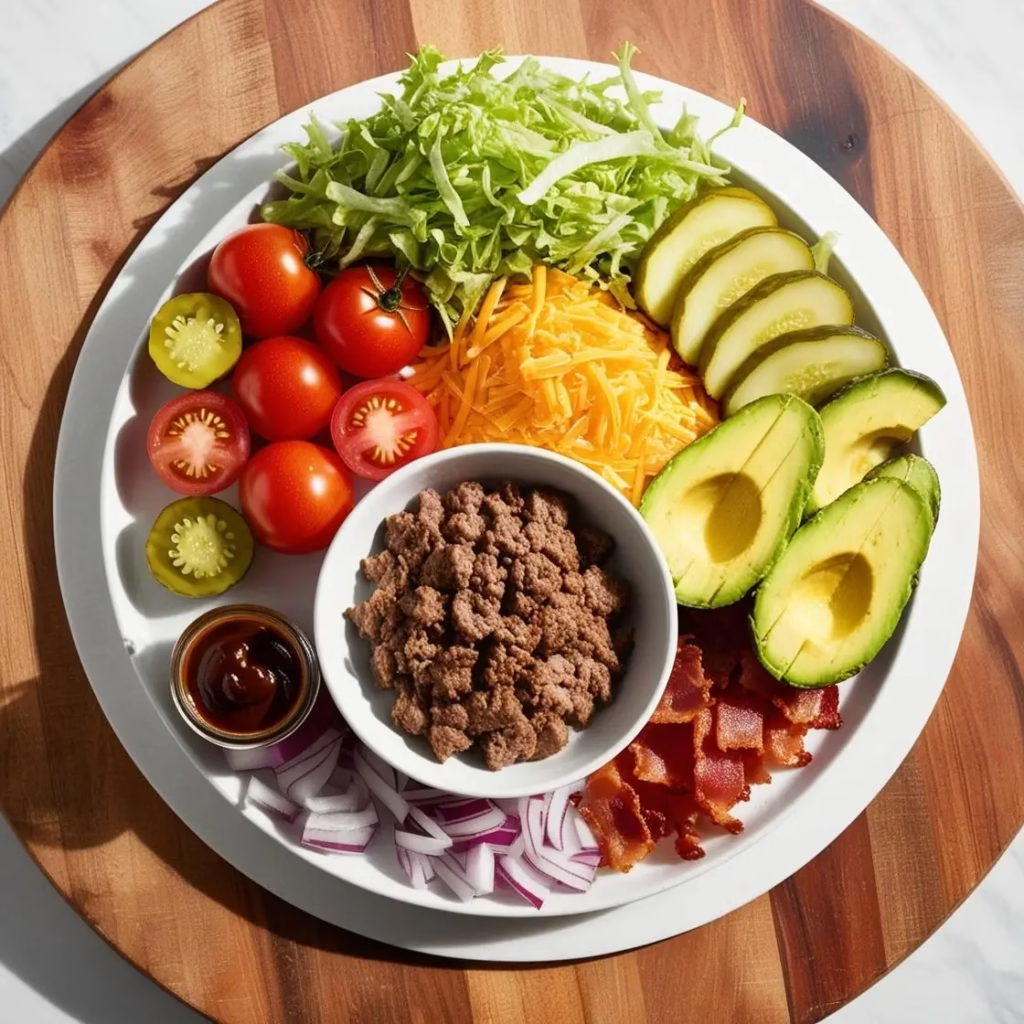
Step-by-Step Instructions
- Prepare the vegetables: First, wash and dry all produce thoroughly. Then, chop the lettuce into bite-sized pieces, slice tomatoes, dice red onion, and cut pickles into small pieces.
- Season the meat: In a large bowl, combine ground beef with 1 teaspoon salt, ½ teaspoon black pepper, 1 teaspoon garlic powder, and ½ teaspoon onion powder. Subsequently, mix gently with your hands, being careful not to overwork the meat.
- Cook the beef: Heat a skillet over medium-high heat and add the seasoned ground beef. Break it apart with a wooden spoon while it cooks. After about 7-8 minutes, or when no pink remains, remove from heat.
- Prepare the special sauce: Meanwhile, in a small bowl, whisk together 3 tablespoons mayonnaise, 1 tablespoon ketchup, 1 teaspoon mustard, and 1 tablespoon pickle relish until smooth and well combined.
- Cook meat if using: In a separate pan, fry meat until crispy, then chop or crumble into pieces.
- Assemble the bowls: Start with a base of lettuce in each bowl. Next, add a portion of the cooked ground beef in the center. Then, arrange tomatoes, onions, pickles, and avocado slices around the beef. Consequently, sprinkle cheese over the warm meat so it melts slightly.
- Finish and serve: Drizzle the special sauce over each bowl. Finally, top with meat crumbles if using, and serve immediately while the beef is still warm.
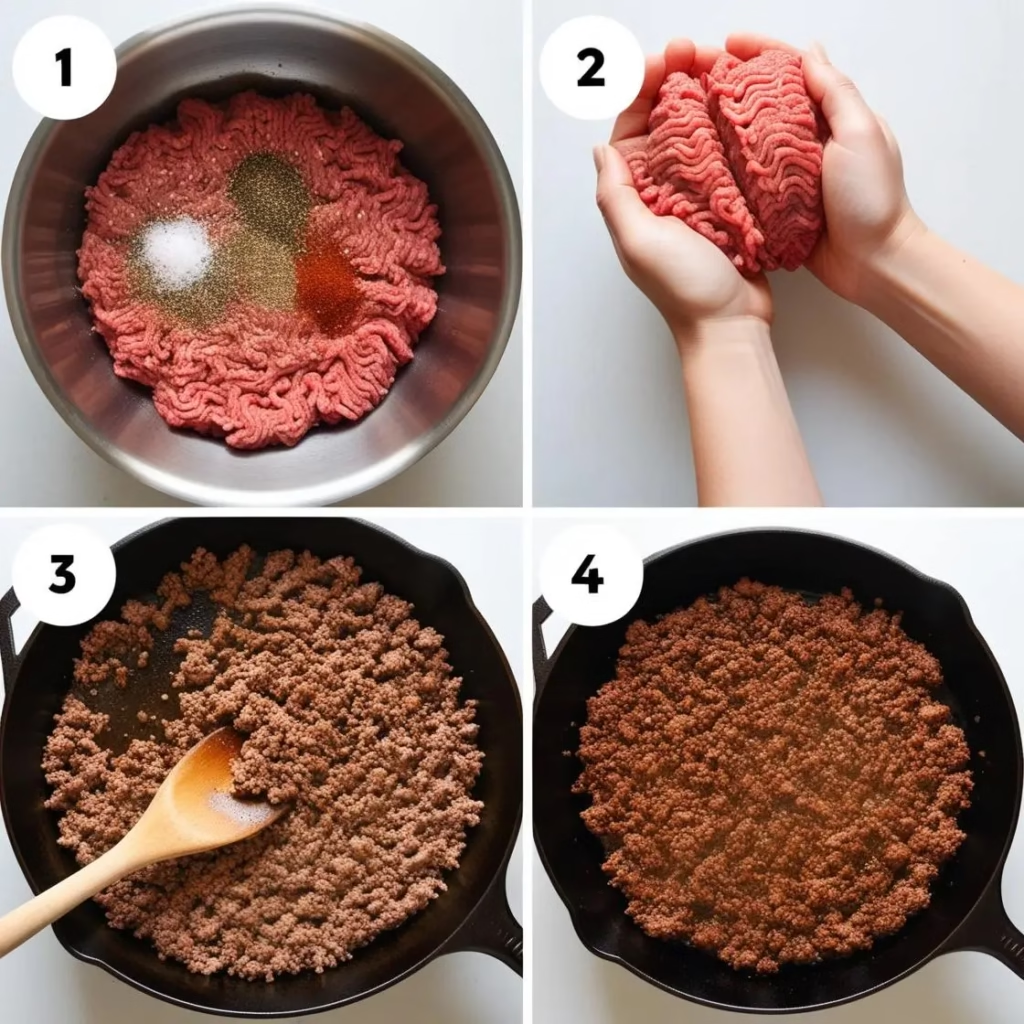
Tips for Burger Bowl Success
For the absolute best results, don’t overcook the ground beef – it should remain juicy rather than dry. Additionally, warming your bowls before assembling helps keep everything at the perfect temperature. Furthermore, preparing all your toppings before cooking the meat ensures a smooth assembly process.
If you’re serving guests with different dietary needs, consider setting up a « burger bowl bar » where everyone can customize their own creation. Meanwhile, for meal prep purposes, store the components separately and assemble just before eating. Otherwise, the lettuce will wilt under the warm ingredients.
For an extra flavor boost, toast some sesame seeds and sprinkle them on top to mimic that classic burger bun experience. Surprisingly, this small addition makes a noticeable difference in the overall taste profile.
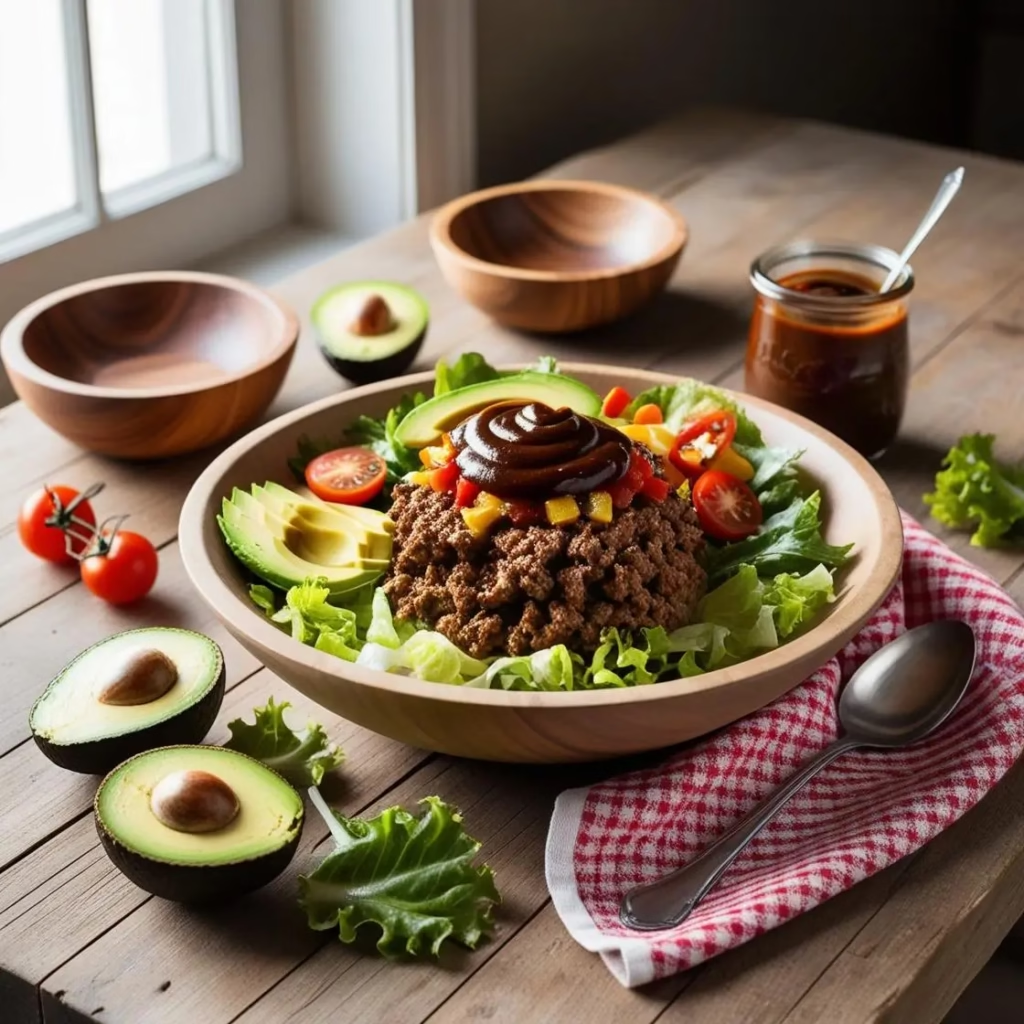
Storage Information
The beauty of Burger Bowls lies partially in their meal-prep potential. To store effectively, keep all components in separate containers in the refrigerator. The cooked beef will last 3-4 days when properly refrigerated in an airtight container. However, the special sauce should be used within 5 days.
When ready to eat, gently reheat only the beef in the microwave or in a pan over medium heat. Subsequently, assemble your bowl with the fresh cold ingredients and enjoy. Consequently, you’ll have a meal that tastes just as good as when freshly made.
For freezing, only the cooked ground beef is suitable. Store it in freezer-safe containers for up to 3 months. Then, thaw overnight in the refrigerator before reheating and assembling your bowl.
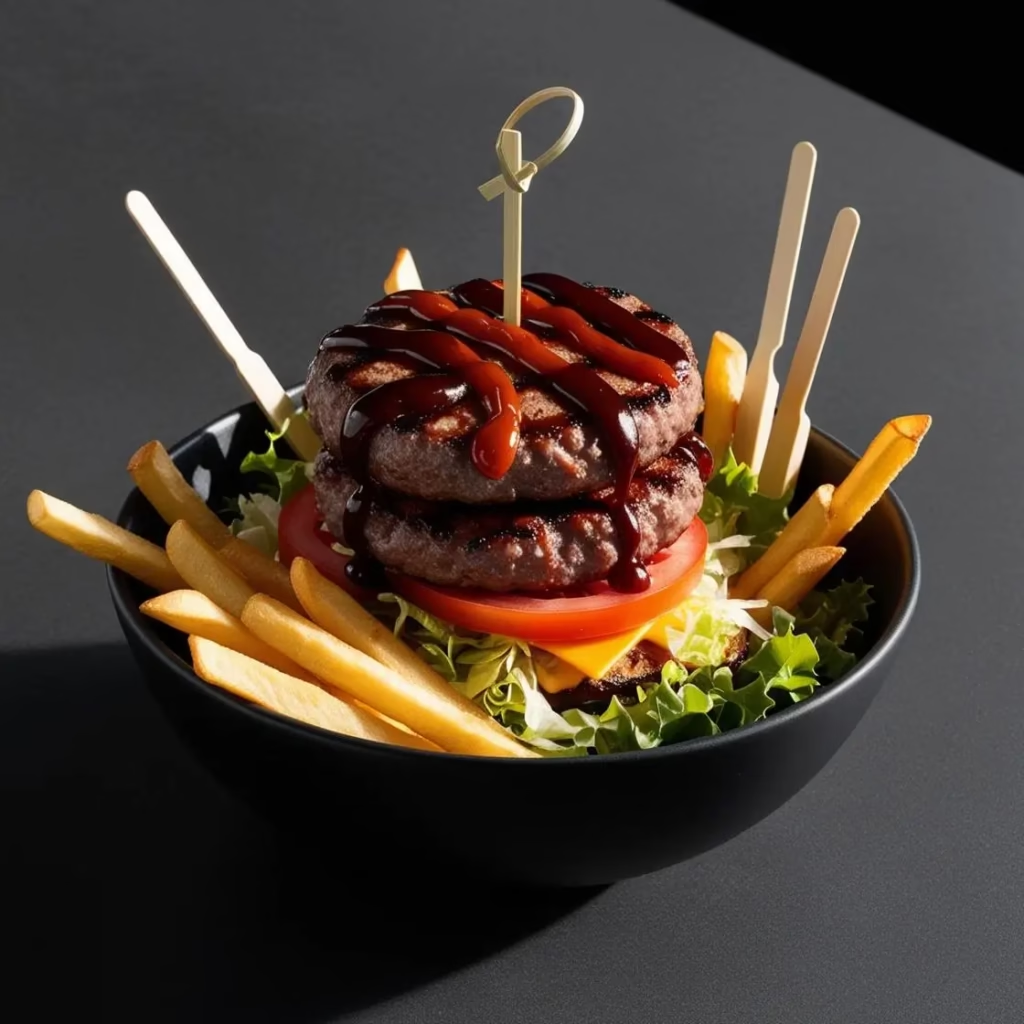
Nutritional Information
A standard Burger Bowl made with the ingredients specified in our recipe provides the following nutritional values per serving:
| Nutrient | Amount | % Daily Value* |
|---|---|---|
| Calories | 485 | – |
| Total Fat | 32g | 41% |
| Saturated Fat | 11g | 55% |
| Trans Fat | 0.5g | – |
| Cholesterol | 95mg | 32% |
| Sodium | 780mg | 34% |
| Total Carbohydrates | 13g | 5% |
| Dietary Fiber | 6g | 21% |
| Sugars | 4g | – |
| Protein | 34g | 68% |
| Vitamin D | 0.2mcg | 1% |
| Calcium | 220mg | 17% |
| Iron | 3.5mg | 19% |
| Potassium | 820mg | 17% |
| Vitamin A | 3500IU | 70% |
| Vitamin C | 25mg | 28% |
*Percent Daily Values are based on a 2,000 calorie diet. Your daily values may be higher or lower depending on your calorie needs.
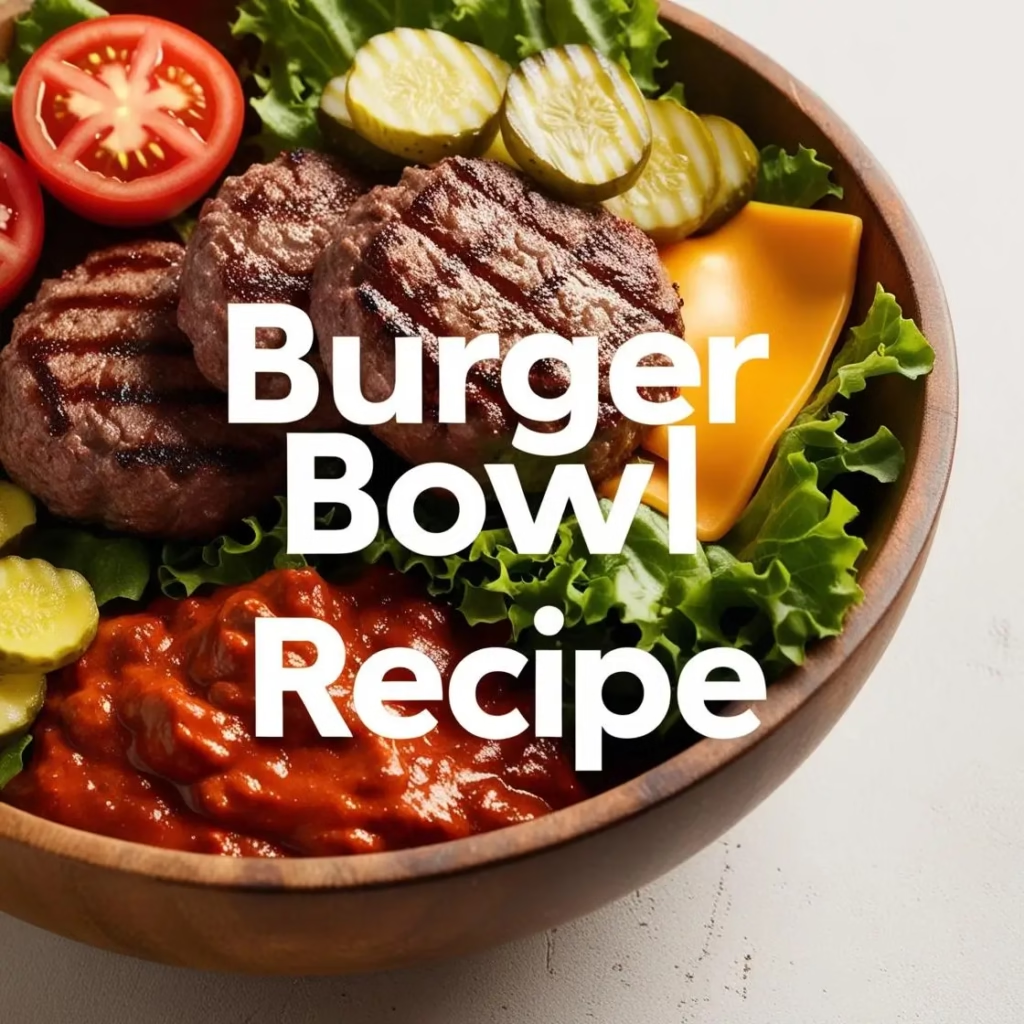
Similar Recipes You Might Like
If you enjoy this Burger Bowl, you’ll undoubtedly appreciate these related recipes:
- Cheesy Garlic Chicken Wraps: Similar concept but with Mexican-inspired flavors
- Greek Meatball Bowl: Mediterranean flavors with tzatziki sauce
- Breakfast Burger Bowl: Morning version with a fried egg and breakfast sausage
- Asian-Inspired Turkey Bowl: Using ground turkey with soy sauce and ginger
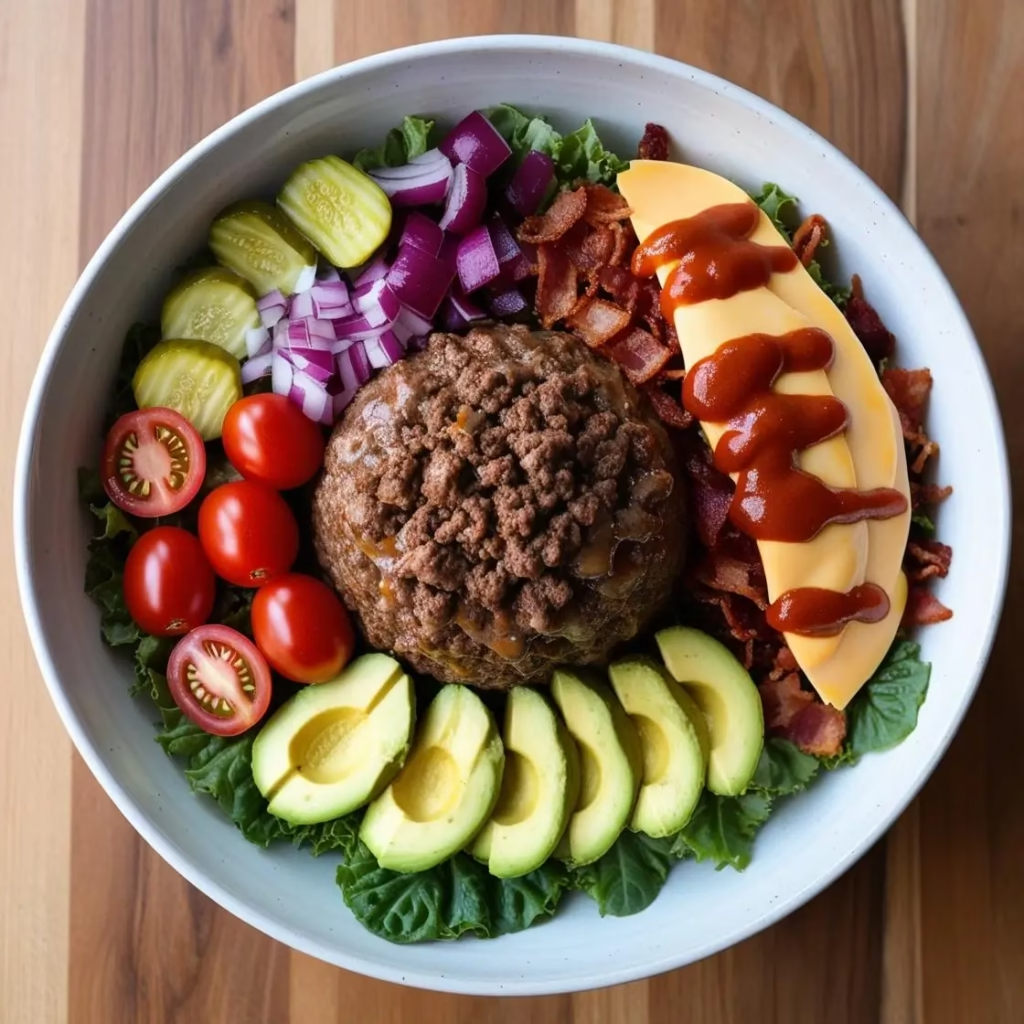
Frequently Asked Questions About Burger Bowls
Is a Burger Bowl keto-friendly?
Absolutely! The standard Burger Bowl recipe is indeed keto-friendly with only 13g of total carbohydrates and 6g of fiber, resulting in just 7g of net carbs per serving. Additionally, the high fat content from the beef, cheese, and avocado aligns perfectly with ketogenic dietary requirements. Furthermore, you can easily adjust the recipe to include even more healthy fats if desired.
Can I make Burger Bowls in advance for meal prep?
Yes, however, proper storage is essential for the best results. First and foremost, always store the components separately – keep the cooked beef, vegetables, and sauce in different containers. Subsequently, when ready to eat, reheat only the beef portion and assemble your bowl with the fresh ingredients. As a result, you’ll maintain the crisp texture of the vegetables and prevent the lettuce from wilting under warm ingredients.
How can I make this recipe vegetarian?
To create a vegetarian version, you can certainly substitute the ground beef with several excellent alternatives. For instance, plant-based ground meat substitutes work remarkably well and can be seasoned identically to the beef. Alternatively, you might consider using grilled portobello mushrooms, seasoned lentils, or a homemade bean burger crumbled into the bowl. Nevertheless, you’ll want to adjust the seasonings accordingly to ensure a flavorful result.

The Burger Bowl represents the perfect marriage of convenience, nutrition, and incredible flavor. By deconstructing the classic burger, we’ve created something that’s arguably even better than the original. Not only does this approach offer flexibility for different dietary needs, but it also presents a fresh way to enjoy familiar flavors.
I encourage you to make this recipe your own by experimenting with different toppings, proteins, and sauces. Subsequently, you might discover combinations that become new family favorites. In fact, the possibilities are virtually endless, which is precisely why this concept has such staying power.
Ultimately, food should bring joy while nourishing our bodies, and this Burger Bowl recipe accomplishes both goals beautifully. Therefore, I hope you’ll give it a try and experience firsthand why it’s become such a beloved staple in my household and countless others.
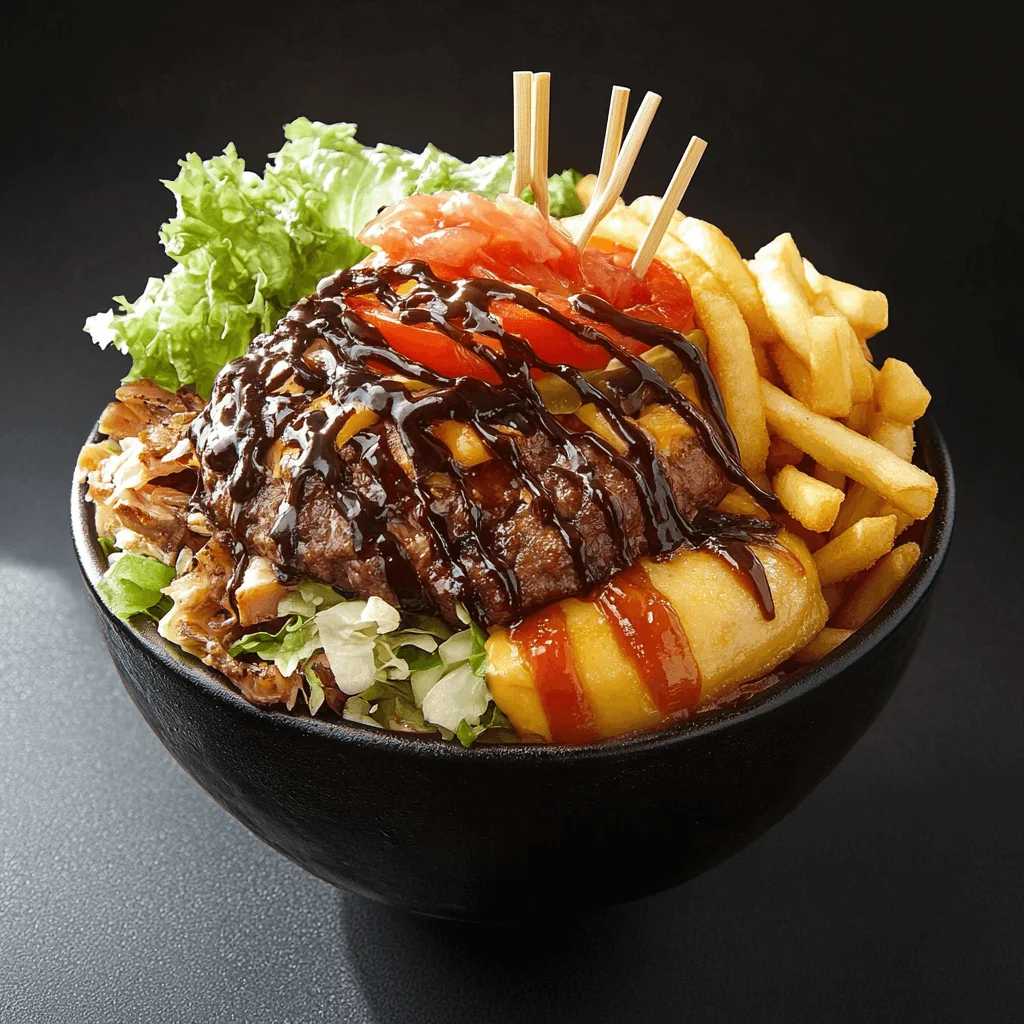
« How to Make a Delicious Burger Bowl Recipe at Home »
Description
Transform burger night with our delicious Burger Bowl recipe – all the flavors of your favorite burger without the bun! Perfect for low-carb diets, meal prep, and customizable for the whole family. Ready in just 30 minutes!
Ingredients
For the special sauce:
Instructions
- Prepare and chop all vegetables
- Season ground beef with salt, pepper, garlic powder, and onion powder
- Cook beef in skillet over medium-high heat until no pink remains (7-8 minutes)
- Mix sauce ingredients in a small bowl
- If using meat, cook until crispy and crumble
- Assemble bowls: lettuce base, beef, toppings, cheese, sauce, and meat
- Serve immediately
Notes
- Notes: For meal prep, store components separately and assemble just before eating.

